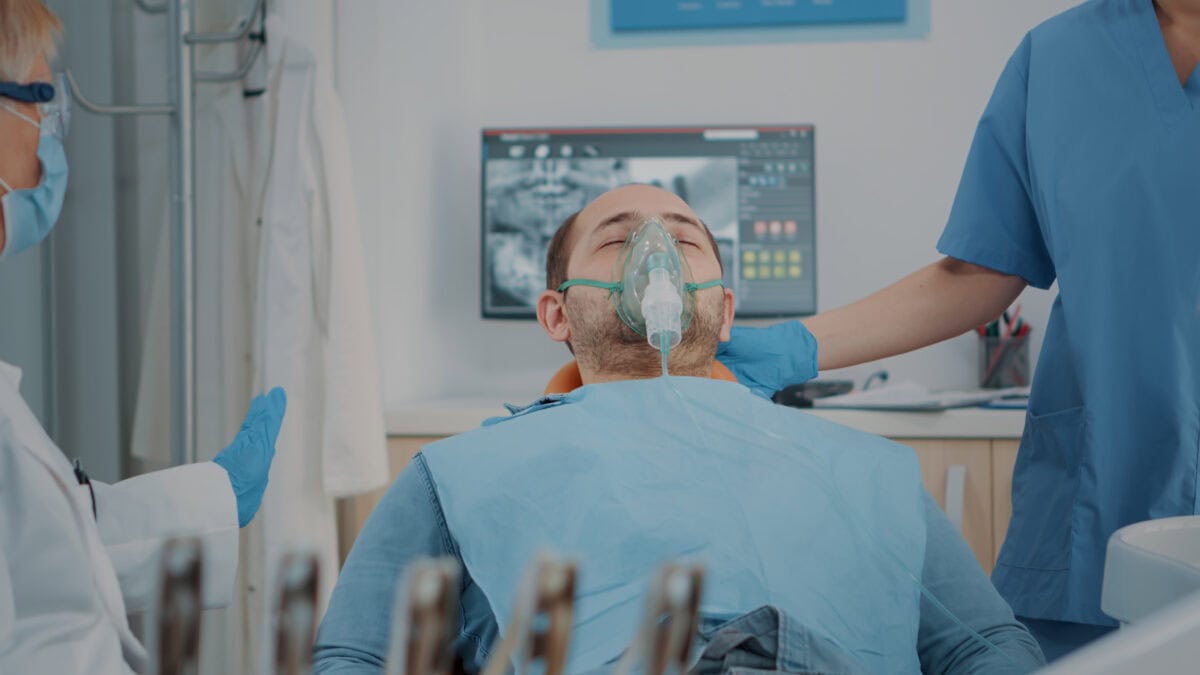
How Can ASCs Beat the Anesthesiologist Shortage?
August 11, 2025You know you need to do it.
Your competitors just added sedation services to attract more patients. Your own patients ask about it too, and you’re starting to realize that local anesthesia and nitrous oxide aren’t enough.
But you’re hesitant.
Offering sedation sounds promising, until you consider everything it might involve: permits, training, equipment, staff scheduling, patient safety protocols, liability. That’s a lot to take on when your clinic is already operating at full speed.
So the real question becomes: Can you add dental sedation services without disrupting your workflow?
The encouraging answer is yes, and this article will show you how.
Is Now the Right Time to Add Sedation Services?
Market trends suggest that now is an ideal moment to expand your offerings.
The Dental Organization for Conscious Sedation (DOCS) determined that the use of sedation techniques in dental practices has increased by 20% over the past decade, and according to a report by Market.us., the dental anesthesia market is projected to grow at a rate of 5.3% annually through 2033.
This steady growth indicates that more patients are asking for sedation, but it also shows that dental care is evolving. More and more, sedation services are becoming a trusted way for practices to deliver better, satisfactory care, create a more comfortable patient experience, and stay competitive.
Common Barriers to Offering Dental Sedation
However, even practices that recognize the benefits of adding dental anesthesia services often hesitate because of the related complexities:
- Regulatory hurdles like licensing, credentialing, and sedation permitting
- Administrative burdens like inventory management and scheduling complications
- Liability risks and insurance implications
- Anesthesia provider shortage and staffing limitations
- Ongoing training needs for clinical and support staff
- Quality assurance across sedation cases
Each of these concerns ties back to a common theme: sedation services often feel like they’ll interrupt the flow of an otherwise efficient practice.
The Challenge of Doing It All In-House
For busy teams already working at capacity, finding the time and bandwidth to manage the additional responsibilities of advanced sedation is often unrealistic.
More than a clinical decision, offering dental sedation is an operational decision; one that is time-intensive, requires cross-functional coordination, and demands ongoing attention to compliance, staffing, and patient safety.
Even when a practice assigns a dedicated team member to take the lead, the implementation demands can clash with the fast-paced nature of day-to-day operations. It’s not uncommon for sedation initiatives to stall, or for staff to become overwhelmed trying to balance patient care with the complexities of rollout.
So, How Do You Add Sedation Services Without Disrupting Workflow?
Adding sedation services doesn’t have to mean overhauling your operations. Here’s how to do it strategically, without disrupting your workflow.
1. Start with Clear Goals & Assess Your Patient Base
Begin by defining what you want to achieve. Are you looking to:
- Reduce patient anxiety?
- Expand into more complex procedures?
- Improve patient retention?
- Serve a specific patient demographic better?
Then, take a close look at your current patient base. Who are they — children, seniors, adults with dental anxiety? How often do patients ask about sedation? For which types of procedures?
These insights will help you determine:
- Which types of dental sedation programs to offer
- Who can legally administer them
- How frequently you need anesthesia support
- What level of staffing or infrastructure you need
2. Understand the Regulatory Landscape Early
Before offering any sedation services, research your state’s credentialing and permitting requirements. These vary widely, and misunderstanding them can lead to compliance violations.
For example, in North and South Carolina, local anesthesia and nitrous oxide can typically be administered without a sedation permit. However, moderate or deep sedation (including IV sedation) requires the practice to hold a valid sedation permit, regardless of who the anesthesia provider is.
Ask yourself:
- Does the team have the time and expertise to navigate these requirements?
- Who will be responsible for maintaining compliance over time?
3. Evaluate Your Workflow Capacity
Next, assess how sedation services will fit into your clinic’s existing operations. Key questions to consider:
- Will dental procedures take longer to complete?
- Do you have recovery protocols and space for post-op monitoring?
- Can your scheduling system accommodate these changes?
- Is the staff trained to support sedation cases confidently?
Understanding your current limitations, whether logistical, staffing-related, or technological, will help you identify where adjustments or support may be needed.
4. Outsource Dental Sedation
Once you’ve defined your goals, evaluated your workflow, and understood the regulatory requirements, the next step is implementation, and that’s where many practices benefit from external support.
Rather than building everything in-house, partnering with a dedicated anesthesia service provider allows you to integrate sedation services efficiently, safely, and without overwhelming your team. These providers take full ownership of the clinical, administrative, and regulatory responsibilities, offering comprehensive support across every stage of the sedation process, including:
- Safe and compliant dental anesthesia administration
- Anesthesia providers staffing on demand
- Pre-procedure patient assessments and post-op follow-up
- Clinic sedation safety evaluation
- Inventory management for anesthesia-related supplies
- Staff training and education
- Support with sedation permitting and ongoing compliance
The advantages of outsourcing dental anesthesia services go far beyond avoiding disruptions in your day-to-day operations. Practices that partner with experienced sedation providers often gain:
- Peace of mind knowing sedation is handled by experts trained in dental anesthesia
- More time to focus on patient care and practice growth
- Expanded service offerings, allowing you to treat more patients and attract new ones
- Reduced liability and stronger compliance posture
- Higher patient satisfaction, especially among anxious or high-risk patients
Let’s Make Sedation Work for Your Practice
With the right support, adding dental sedation services can be simple and stress-free. NovaSed is here to help you integrate it safely, efficiently, and without disrupting your workflow.
At NovaSed, we’re committed to equipping every clinic with the tools, expertise, and support to build a safe, efficient sedation model. As an extension of your team, our experienced CRNAs fit seamlessly into your existing operations, supporting you before, during, and after the procedure. Whether you need full-service dental anesthesia management or just a helping hand, we’re here to help. Get in touch to explore how we can support your practice.


